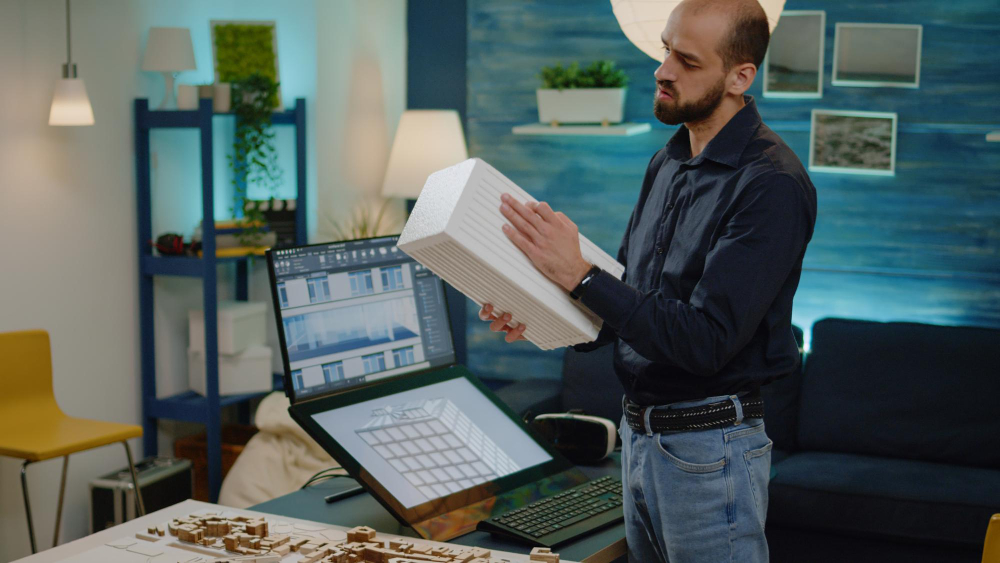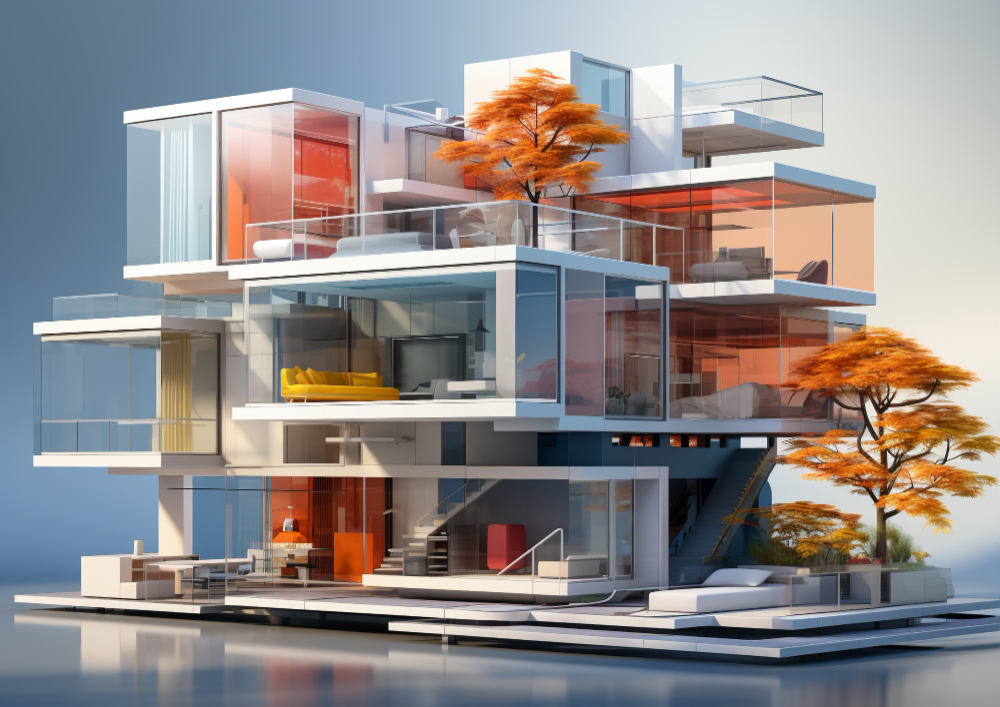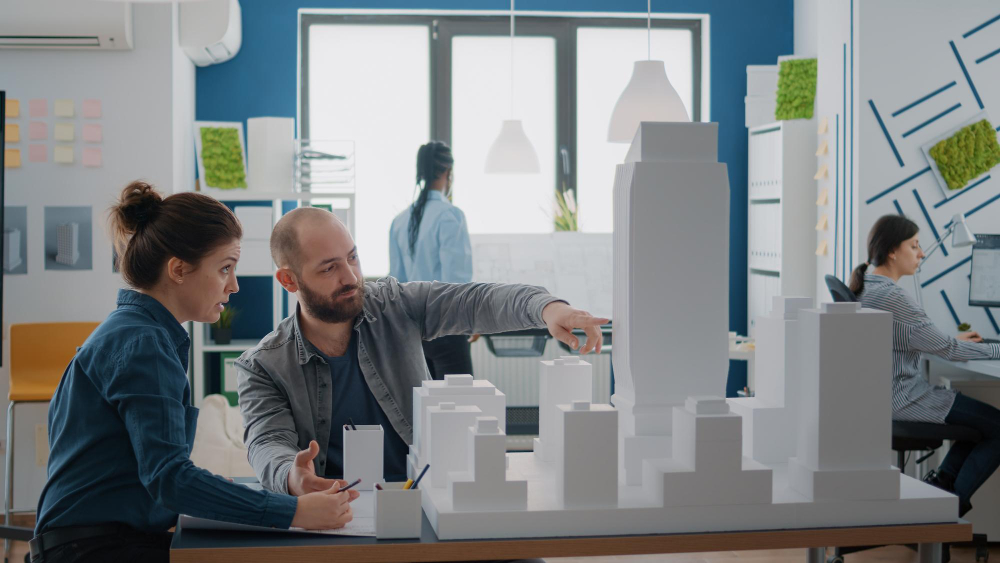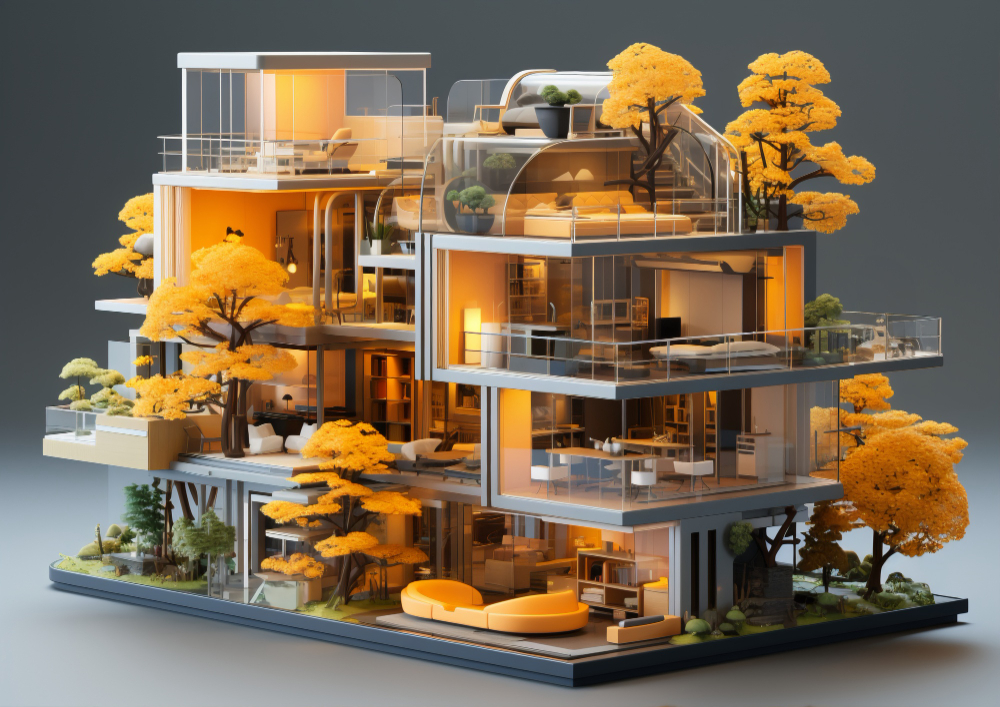Introduction
In the realm of architecture, engineering, and construction (AEC), the integration of advanced technologies has continuously pushed the boundaries of what is possible. One of the most transformative innovations in recent years is the combination of Generative Design with Building Information Modeling (BIM). Generative Design, an iterative design process that uses algorithms to generate a multitude of design solutions based on defined parameters, when combined with BIM, which provides a detailed digital representation of a building’s physical and functional characteristics, creates a powerful synergy. This fusion not only enhances design creativity and efficiency but also optimizes performance and resource management throughout the building lifecycle.
What is Generative Design?
Generative Design is an advanced design methodology that utilizes computational algorithms to explore a wide array of design solutions. Unlike traditional design methods that rely heavily on the designer’s intuition and experience, generative design leverages the power of computing to generate and evaluate thousands of potential designs based on predefined criteria. These criteria can include factors such as spatial constraints, material properties, structural integrity, environmental impact, and aesthetic preferences.
The process typically involves the following steps:
- Define Objectives and Constraints: Designers input the specific goals and limitations of the project, such as spatial requirements, budget constraints, sustainability goals, and functional needs.
- Generate Design Options: The generative design software uses algorithms to create a multitude of design variations that meet the specified criteria.
- Evaluate and Optimize: Each design iteration is evaluated against the predefined objectives. The software uses performance metrics to rank and optimize the designs, presenting the best options for further refinement by the designers.
- Select and Implement: Designers select the most suitable design from the generated options and proceed with detailed development and implementation.
What is BIM?

Building Information Modeling (BIM) is a digital representation of the physical and functional characteristics of a facility. It serves as a shared knowledge resource for information about a facility, forming a reliable basis for decisions throughout its lifecycle—from inception and design through construction, operation, and maintenance.
Key features of BIM include:
- 3D Modeling: Creating a detailed 3D representation of the building that includes architectural, structural, and MEP (mechanical, electrical, and plumbing) elements.
- Information Management: Integrating detailed information about materials, specifications, schedules, and costs into the model.
- Collaboration: Facilitating collaboration among various stakeholders by providing a centralized platform where all relevant data is stored and accessible.
- Lifecycle Management: Supporting the entire lifecycle of the building, from initial design through construction and into facility management and operation.
The Synergy of Generative Design and BIM

When Generative Design is integrated with BIM, it brings together the best of both worlds: the creative potential and computational power of generative design with the detailed, data-rich environment of BIM. This combination offers numerous benefits:
1. Enhanced Creativity and Innovation
Generative Design empowers architects and designers to explore a broader range of possibilities than traditional methods allow. By leveraging computational power, designers can quickly generate and evaluate a vast array of design options. BIM complements this by providing a detailed and accurate representation of each design option, allowing for informed decision-making based on comprehensive data.
2. Optimized Performance and Sustainability
Generative Design algorithms can optimize designs for various performance criteria, such as energy efficiency, structural integrity, and material usage. When these optimized designs are integrated into BIM, the detailed information about materials, systems, and performance metrics can be used to ensure that the final design meets or exceeds sustainability and performance goals.
3. Improved Collaboration and Coordination
BIM’s collaborative platform allows all project stakeholders to access and contribute to the evolving design. Generative Design adds another layer of collaboration by enabling stakeholders to define and adjust design criteria in real-time, generating updated design options that reflect the latest requirements and constraints.
4. Increased Efficiency and Reduced Costs
The iterative nature of Generative Design allows for rapid prototyping and evaluation of design options, significantly reducing the time required for the conceptual design phase. BIM’s detailed information management and coordination capabilities further streamline the design and construction process, reducing errors, rework, and associated costs.
5. Comprehensive Lifecycle Management
By integrating Generative Design with BIM, designers can ensure that optimized designs are carried through to construction and operation. BIM’s ability to manage detailed information throughout the building’s lifecycle means that the benefits of generative design—such as optimized performance and resource efficiency—are realized in the built environment and maintained through ongoing facility management.
Applications of Generative Design with BIM

1. Architectural Design
In architectural design, Generative Design can explore various spatial configurations, facade treatments, and structural solutions. BIM provides the detailed modeling and information management needed to refine and implement these designs, ensuring that aesthetic, functional, and regulatory requirements are met.
2. Structural Engineering
Generative Design can optimize structural components for strength, stability, and material efficiency. BIM allows structural engineers to integrate these optimized designs into the overall building model, coordinating with architectural and MEP systems to ensure a cohesive and constructible solution.
3. Urban Planning
For urban planners, Generative Design can analyze and optimize land use, traffic flow, and environmental impact. BIM can then model the proposed developments in detail, providing a comprehensive view of how new buildings and infrastructure will interact with the existing urban fabric.
4. Sustainability and Energy Efficiency
Generative Design can optimize building designs for energy efficiency by evaluating factors such as solar orientation, natural ventilation, and thermal performance. BIM can incorporate detailed energy modeling and simulation data, allowing designers to make informed decisions that enhance sustainability throughout the building’s lifecycle.
5. Interior Design and Space Planning
In interior design and space planning, Generative Design can explore various layouts and configurations to maximize functionality and aesthetics. BIM provides the detailed modeling needed to visualize and implement these designs, coordinating with architectural and MEP systems to ensure a cohesive and functional interior environment.
Challenges and Considerations

1. Complexity and Learning Curve
Both Generative Design and BIM involve complex software and methodologies that require specialized knowledge and skills. Organizations must invest in training and development to ensure that their teams can effectively utilize these tools.
2. Integration and Interoperability
Integrating Generative Design with BIM requires seamless interoperability between different software platforms. Ensuring that data can be accurately exchanged and coordinated is crucial for successful implementation.
3. Data Management
The iterative nature of Generative Design can produce large amounts of data, which must be effectively managed and integrated into the BIM model. Organizations need robust data management strategies to handle this complexity.
4. Cost and Resource Allocation
Implementing Generative Design and BIM can involve significant upfront costs for software, hardware, and training. Organizations must carefully consider these investments and allocate resources effectively to realize the long-term benefits.
Future Trends in Generative Design with BIM
1. Artificial Intelligence and Machine Learning
The integration of Artificial Intelligence (AI) and Machine Learning (ML) with Generative Design and BIM will further enhance the capabilities of these tools. AI and ML can analyze vast datasets to identify patterns and optimize designs, providing even more refined and innovative solutions.
2. Advanced Simulation and Analysis
Advancements in simulation and analysis technologies will enable more detailed and accurate evaluations of design options. This will allow for better optimization of performance criteria such as energy efficiency, structural integrity, and environmental impact.
3. Enhanced Collaboration Platforms
Future developments in collaboration platforms will facilitate even more seamless integration of Generative Design and BIM. Enhanced cloud-based solutions will enable real-time collaboration and data sharing, further improving project coordination and efficiency.
4. Virtual and Augmented Reality
The integration of Virtual Reality (VR) and Augmented Reality (AR) with Generative Design and BIM will provide immersive and interactive experiences. Stakeholders will be able to visualize and interact with design options in a 3D environment, enhancing understanding and decision-making.
5. Internet of Things (IoT) Integration
IoT devices can provide real-time data on building performance and operations, which can be integrated into Generative Design and BIM processes. This data-driven approach will enable continuous optimization and improvement of building designs and operations.
Conclusion
The integration of Generative Design with Building Information Modeling (BIM) represents a significant advancement in the AEC industry. By leveraging the computational power of generative design and the detailed information management capabilities of BIM, designers and engineers can explore a wide array of innovative solutions, optimize performance and sustainability, and enhance collaboration and efficiency throughout the building lifecycle. As technology continues to evolve, the synergy between Generative Design and BIM will undoubtedly drive further innovation and transformation in the way buildings are designed, constructed, and operated. Embracing these advanced methodologies is not just an option but a necessity for AEC professionals seeking to stay competitive in a rapidly changing industry.
FAQ: Generative Design with BIM
1. What is Generative Design?
Generative Design is a design process that uses computational algorithms to generate multiple design solutions based on predefined criteria and constraints. It enables designers to explore a wide array of possibilities quickly and efficiently.
2. How does Generative Design integrate with BIM?
Generative Design integrates with Building Information Modeling (BIM) by using the detailed data and digital models provided by BIM. This integration allows for the optimization of designs based on comprehensive information about materials, structural integrity, spatial requirements, and more.
3. What are the benefits of combining Generative Design with BIM?
Combining Generative Design with BIM offers several benefits, including enhanced creativity, optimized performance and sustainability, improved collaboration, increased efficiency, and comprehensive lifecycle management of building projects.
4. Can Generative Design with BIM help in optimizing sustainability?
Yes, Generative Design with BIM can optimize designs for sustainability by evaluating factors such as energy efficiency, material usage, and environmental impact. This leads to more sustainable building solutions that can be managed throughout the building’s lifecycle.
5. What industries can benefit from Generative Design with BIM?
While primarily used in the architecture, engineering, and construction (AEC) industry, Generative Design with BIM can also benefit urban planning, interior design, industrial design, and any field that requires complex spatial and structural solutions.
6. What challenges might organizations face when implementing Generative Design with BIM?
Challenges include the complexity of the tools, the steep learning curve, the need for seamless software integration, effective data management, and the initial costs for software, hardware, and training.
7. How does Generative Design enhance creativity in the design process?
Generative Design enhances creativity by allowing designers to explore a vast array of design options that they might not have considered manually. It uses computational algorithms to generate innovative solutions based on the specified criteria.
8. What role does AI play in Generative Design with BIM?
AI and Machine Learning (ML) can analyze large datasets, identify patterns, and optimize designs more effectively. They enhance the capabilities of Generative Design by providing more refined and innovative solutions.
9. How does Generative Design improve collaboration among project stakeholders?
Generative Design, when integrated with BIM, enables real-time collaboration by providing a centralized platform where all stakeholders can access, contribute to, and update the evolving design. This improves coordination and reduces the likelihood of errors and miscommunication.
10. Can Generative Design with BIM be used for small-scale projects?
Yes, Generative Design with BIM is scalable and can be used for projects of all sizes. The benefits of optimized design, improved collaboration, and detailed information management can be advantageous for small-scale projects as well.
11. What future trends can we expect in Generative Design with BIM?
Future trends include the integration of AI and ML, advanced simulation and analysis technologies, enhanced collaboration platforms, immersive experiences through VR and AR, and real-time data integration through IoT devices.
12. How can I get started with Generative Design with BIM?
To get started, research and select the appropriate software tools that support both Generative Design and BIM. Invest in training for your team, start with pilot projects to understand the workflow, and gradually integrate these tools into your standard processes.
13. What software platforms are commonly used for Generative Design with BIM?
Popular platforms include Autodesk Revit with Dynamo, Bentley Systems’ GenerativeComponents, and Graphisoft’s ArchiCAD with Rhino/Grasshopper integration. These platforms offer robust capabilities for integrating Generative Design with BIM.
14. How does Generative Design contribute to cost efficiency?
Generative Design reduces the time needed for the conceptual design phase by quickly generating and evaluating multiple design options. When integrated with BIM, it helps streamline the design and construction process, reducing errors, rework, and associated costs.
15. How do VR and AR enhance Generative Design with BIM?
VR and AR provide immersive and interactive experiences, allowing stakeholders to visualize and interact with design options in a 3D environment. This enhances understanding, collaboration, and decision-making during the design process.








